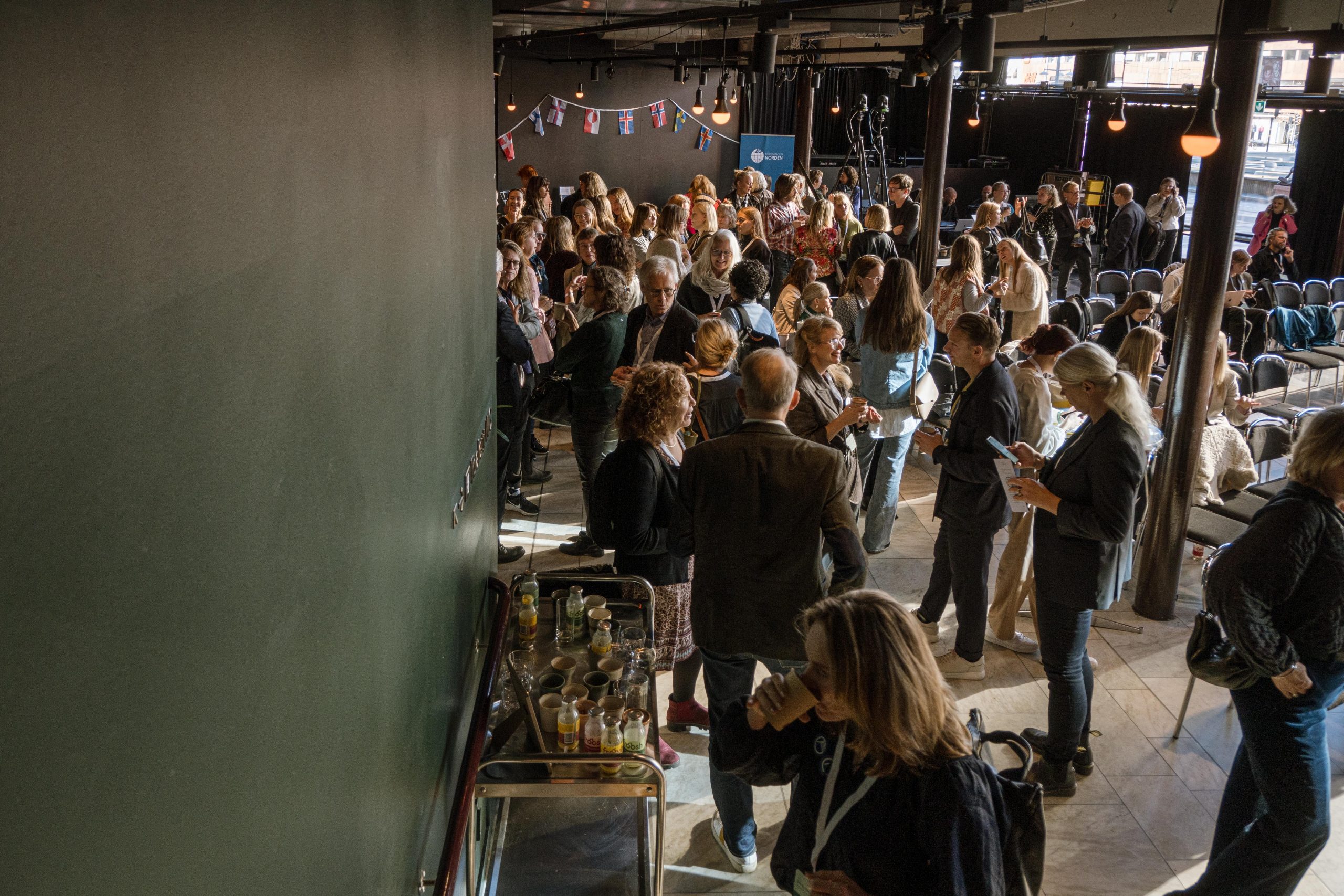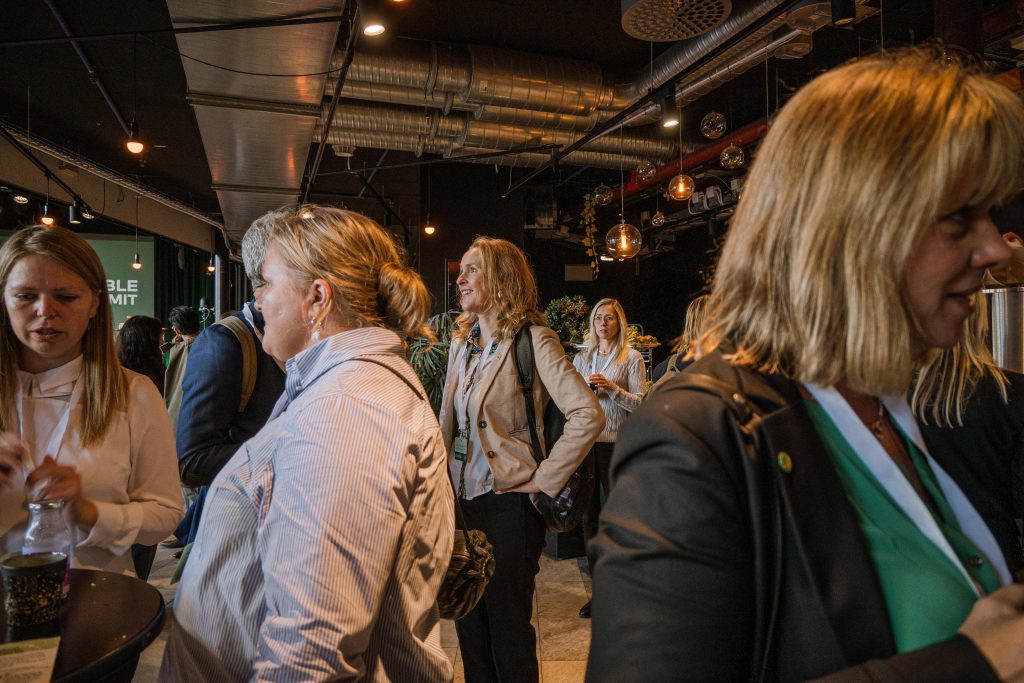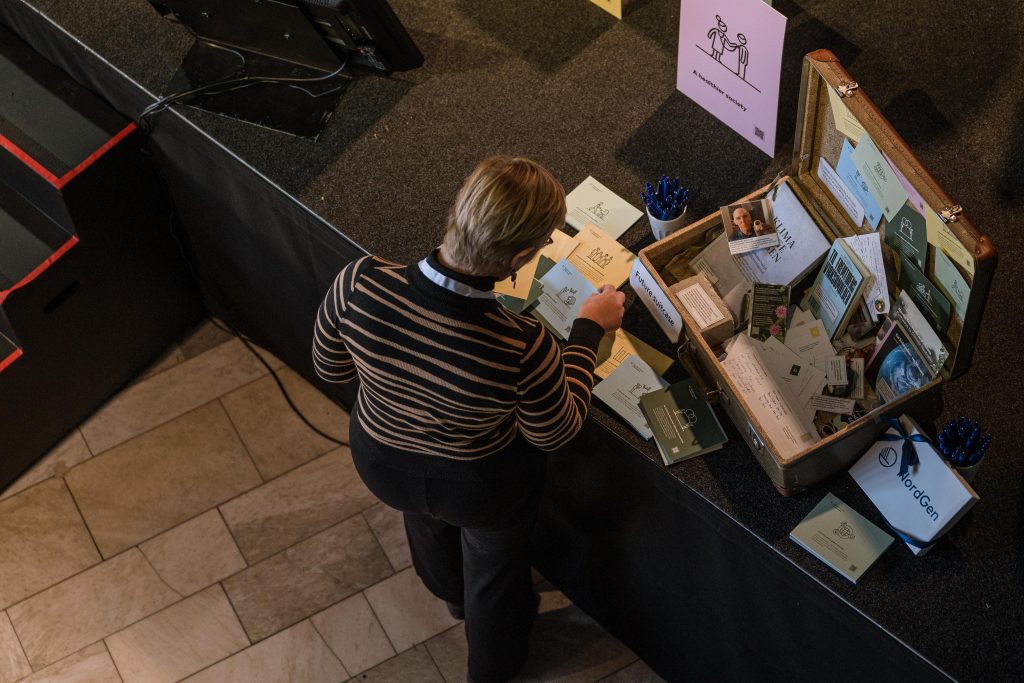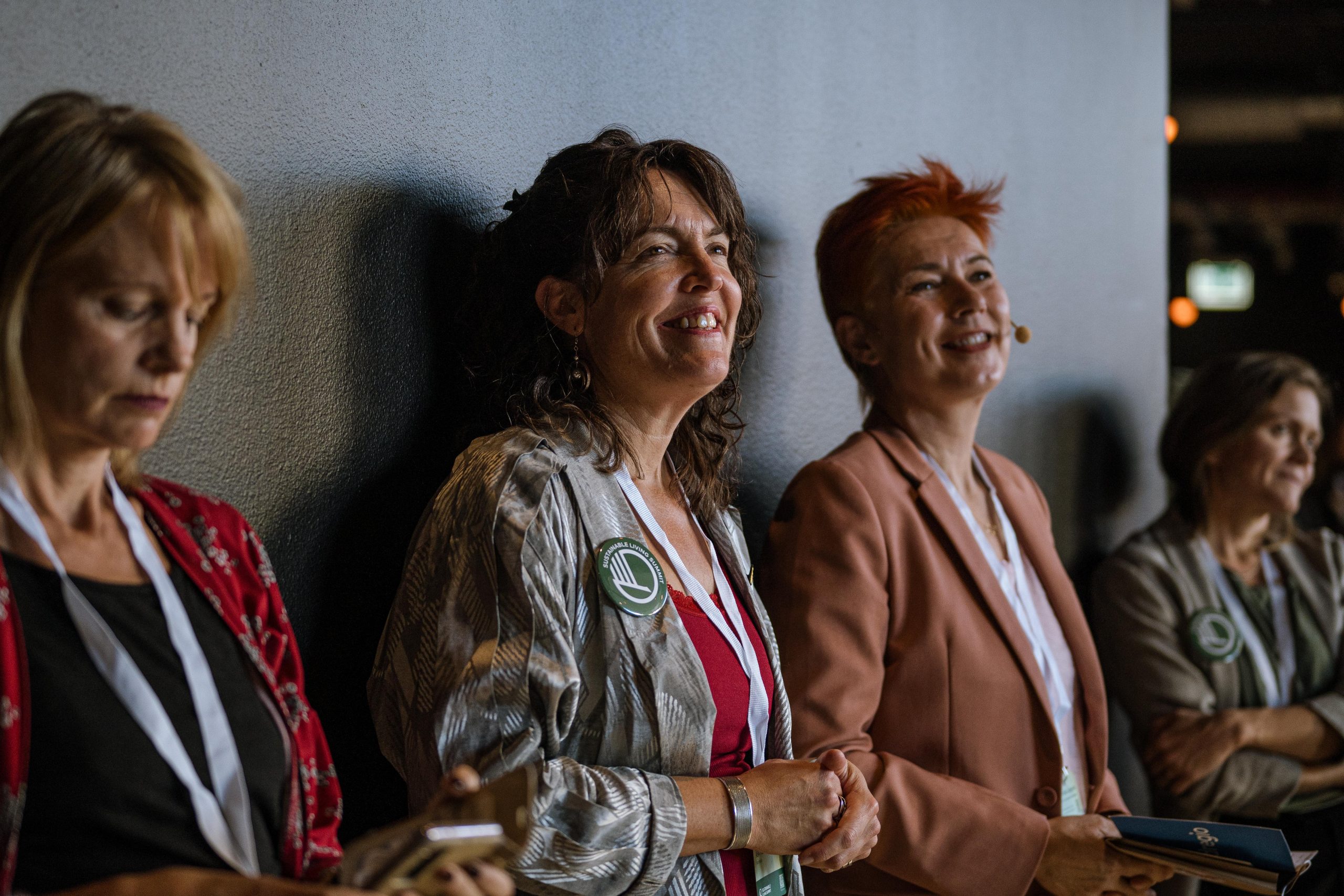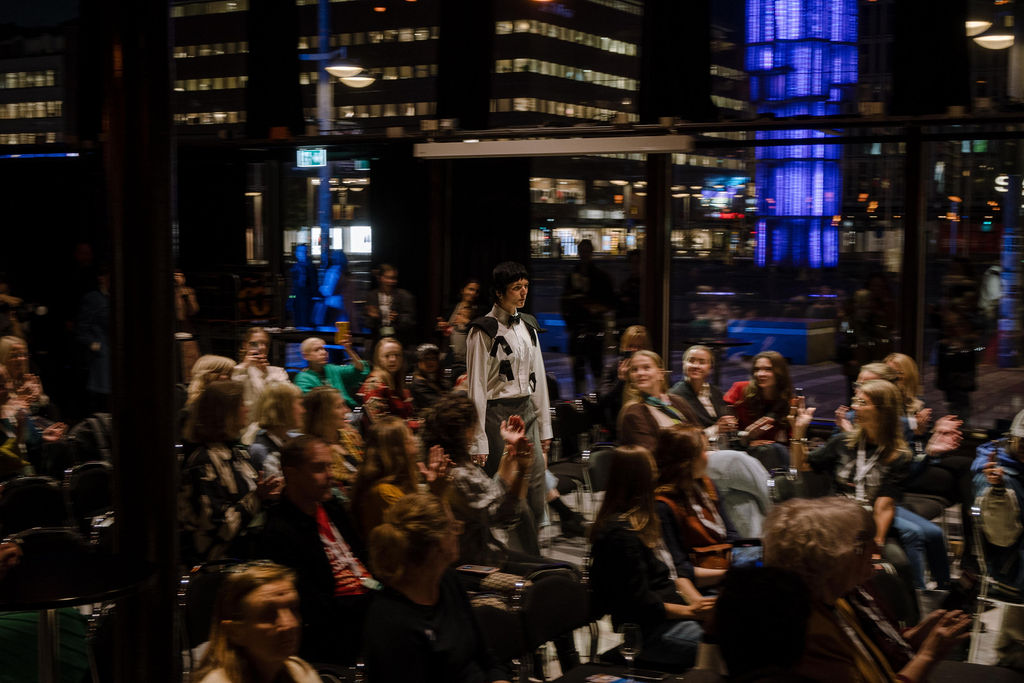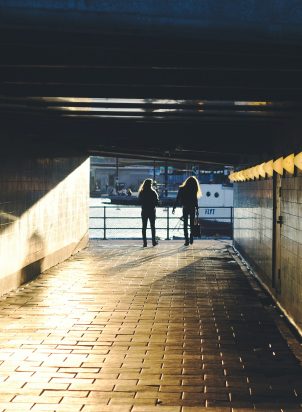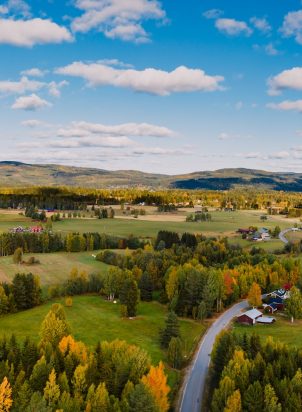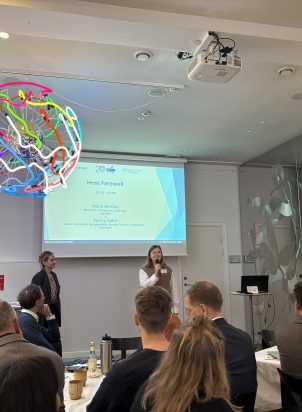The Nordic countries are often considered global front-runners when it comes to creating sustainable societies. And while we do a lot of things right, big tasks lie ahead if we are to reach our vision of being the most integrated and sustainable region in the world by 2030. So how can we make sustainable everyday choices more attractive?
The Sustainable Living programme set out to explore this, collecting six innovative projects, each addressing a crucial aspect of sustainability: youth, food, culture, product labelling, education, and gender. The ultimate goal is to make sustainable choices the new norm in the Nordic Region and this requires a team effort across sectors and country borders.
This week, Nordregio hosted the Sustainable Living Summit in Stockholm, marking the conclusion of the four-year programme. The event launched the Sustainable Living Hub, collecting all the project resources in one place, and thought leaders across industries, policy, government, academia and civil society joined as we shared an inspiring conference day for sharing Nordic knowledge. Nordregio was pleased by the strong interest in the event, with nearly 700 people registering to attend either in person at Kulturhuset or online (watch a recording of the event here).
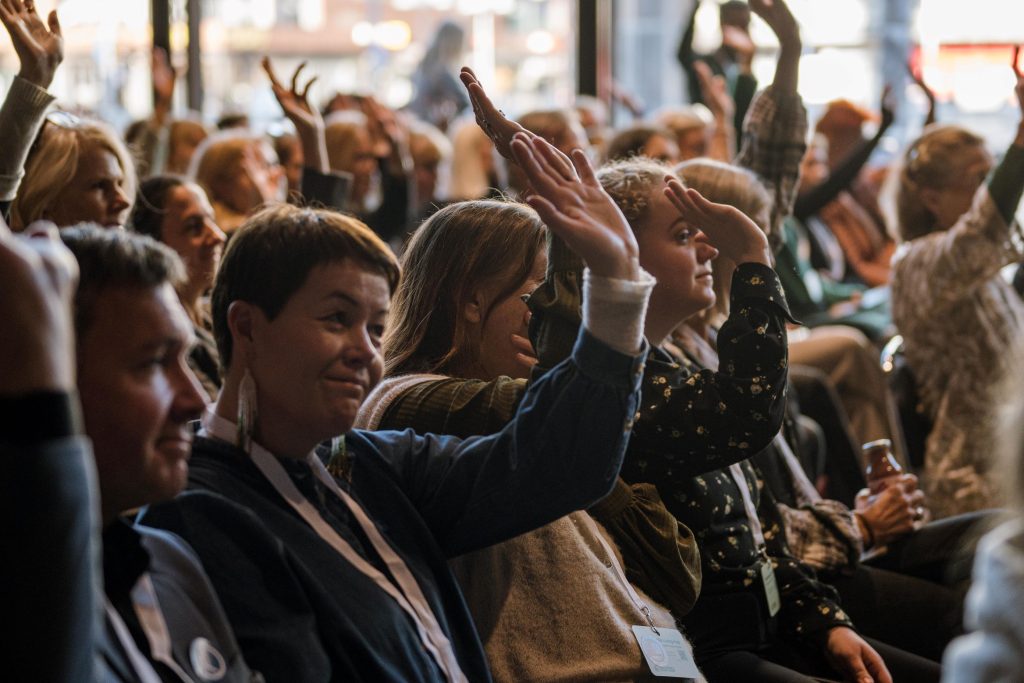
Sweden’s Climate Minister, Romina Pourmokhtari, was invited to open the full-day event, and she set the tone for a collaborative atmosphere by putting emphasis on our everyday practices and Nordic collaborations:
“The Sustainable Living programme is a shining example of how we can foster sustainable lifestyle choices and integrate sustainability into our everyday lives through concrete guidelines and Nordic peer learning.”
Her words encapsulated the sense of responsibility that echoed throughout the day’s discussions, underscoring the need to tackle environmental challenges across sectors and disciplines. Throughout the day, the speakers put the spotlight on both a policy level and an individual level. Sustainable living can be easy—if we work holistically and across sectors to enable the change.
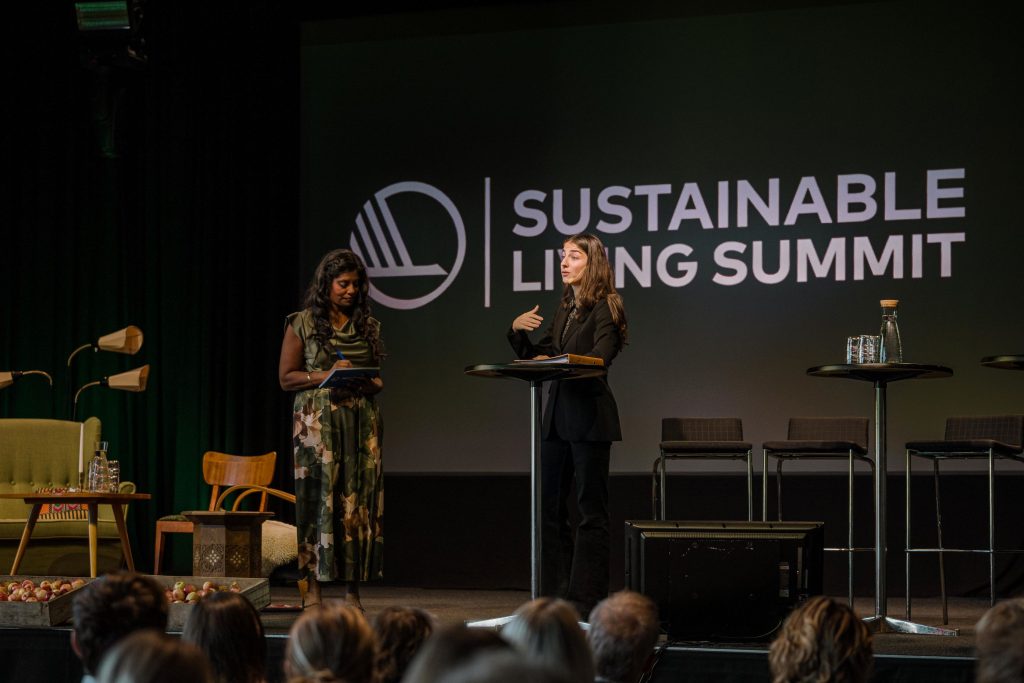
A stronger focus on consumption-based emissions
The report Policy Options for Reducing Consumption-Based Emissions was launched at the beginning of the eventful day. After reviewing approximately 100 policies in the Nordic Region, the authors conclude that governments should strengthen existing measures and oversee Nordic production and consumption on a global scale. It recommended reducing policies that inadvertently increase emissions.
In the research panel discussion that followed, Nordregio’s senior researcher, Nora Sánchez Gassen, shared data from Nordregio’s 2023 survey report, revealing that almost half of Nordic citizens support increased climate mitigation efforts, even if it means higher taxes.
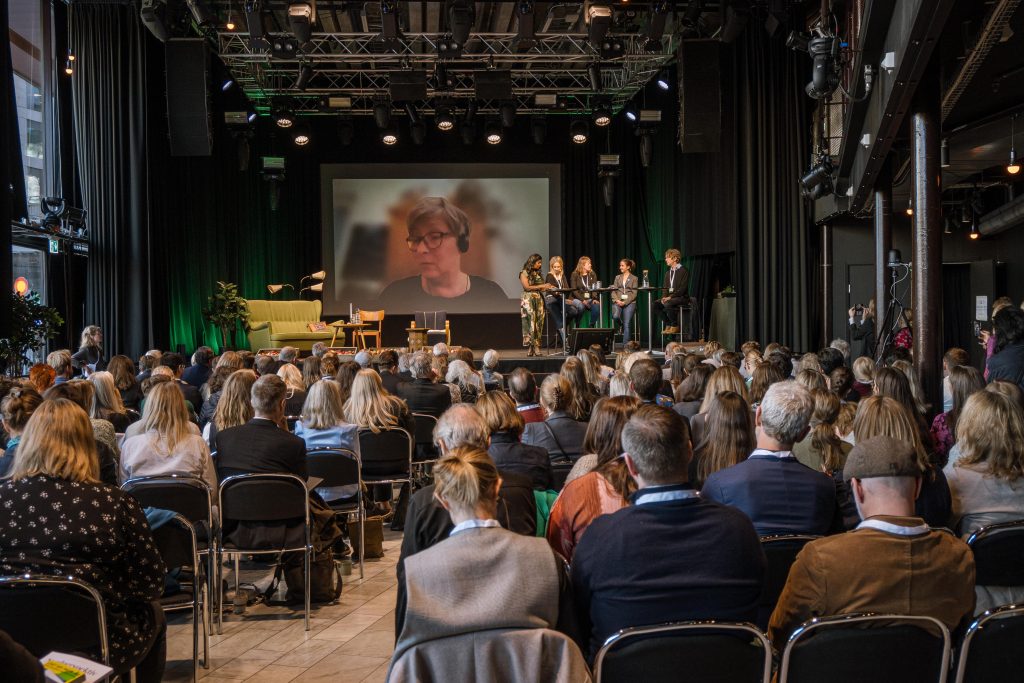
How can we make it easy for consumers to make the sustainable choice
Nudge-focused policies addressing the “softer side” of the transition—changing behaviours, norms, and attitudes—were highlighted as crucial for success.
As the Nordic Swan Ecolabel emphasised during their session: “We must make it easier for consumers to choose green and live sustainably. People aren’t always rational; they choose with their hearts.” The well-known and trusted Nordic Swan Ecolabel presented research showing that 85% of Nordic citizens are willing to change their lifestyles to protect nature, but many find it hard to navigate among greenwashing claims and misleading communication. This is where labels like the Nordic Swan can help guide consumers toward more sustainable choices.
In addition to their work with product guidance, the Swan label also revealed a new analysis showing that using Swan-labeled e-commerce transport in Sweden could reduce climate impact by 41%.
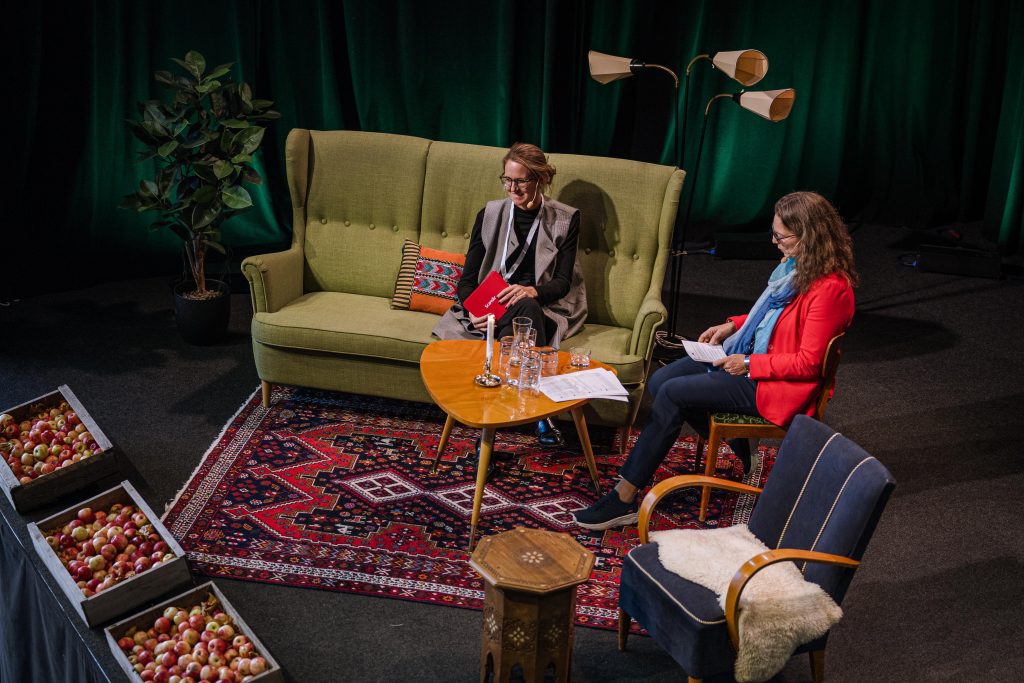
How to cook, eat and shop with both the body and planet in mind
During the entertaining cool-along, food systems and eating habits took the stage.
“If we can’t fix food, we can’t fix anything,” declared Madeleine Linins Mörner from Axfoundation, as around 30% of global greenhouse gas emissions come from food production. “We’ve been too comfortable, too rich: putting stress on the food production system,” she added, calling for government involvement as problem solvers rather than just regulators.
Sebastian Hielm, Director of Food Safety at Finland’s Ministry of Agriculture and Forestry, advocated for more regulations: for the Nordics to start using the European Nutri-Score labels to guide consumers toward healthier, more sustainable food choices.
The Nordic Nutrition Recommendations, launched in 2023 by the Nordic Council of Ministers, presented recommendations focusing on both personal health and planetary well-being. One recommendation was to reduce red meat consumption—an issue often debated in the Nordics, particularly regarding its gendered implications.
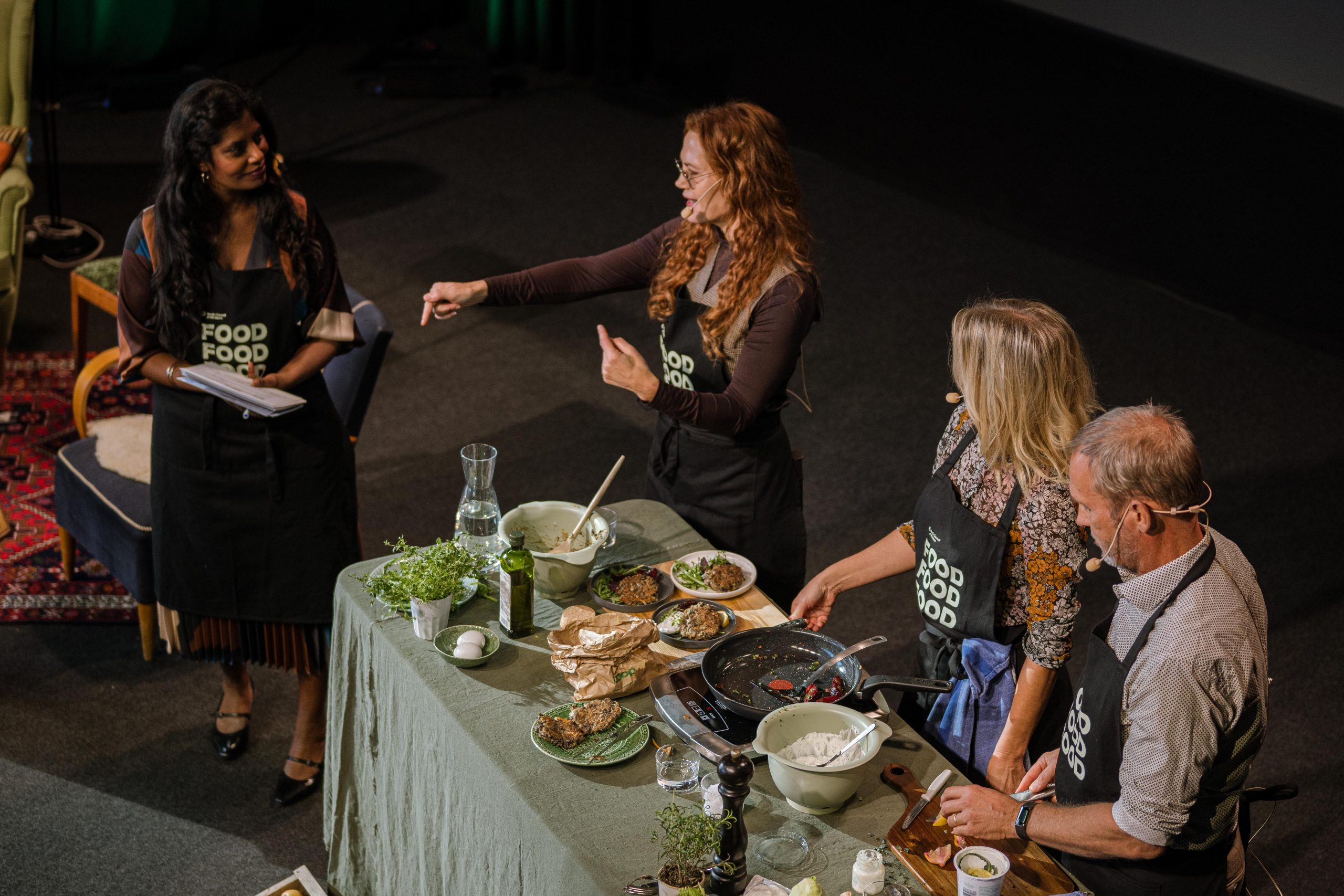
Sustainability is a gendered matter
Gender and age emerged as recurring themes throughout the day, with speakers often joking about the “middle-aged white man” as the archetype of climate resistance. However, research shows the stereotype has some basis: Nordregio and NIKK’s Climate, Youth and Gender report revealed that women engage more with climate organisations than men. NIKK’s Jimmy Sand also highlighted that men tend to have larger carbon footprints, due to higher meat consumption and greater reliance on car travel, underlining the need to address masculinity norms in sustainability efforts.
Youth as frontrunners?
Children and young people are often portrayed as a beacon of hope in discussions about a sustainable future. But is that really the case? We need a reality check on our conviction that young people are our only hope who are aware and passionate about the climate. Ungdomsbarometern’s presentation revealed a gap between attitudes and behaviours among young people. While most have a negative attitude towards fast fashion e-commerce sites like Shein, Temu or Amazon, as much as 83% of girls have ordered from these sites. According to their survey, 37% of young girls expressed interest in climate issues, compared to the 76% who reported an interest in fashion—highlighting the influence of affordability on shopping habits.
Youth inclusion in decision-making was another hot topic of the day. While attitudes are changing and inclusion is increasing—often giving them a place at the table, Ari Sigurdarson, Norway’s UN Youth Delegate on Sustainable Development, argued that progress isn’t happening fast enough. “We don’t want to spend time justifying why we should be included. We want to be included as experts,” he said, and followed by pointing out that sustainable choices are often more costly, adding a class dimension to sustainable living.
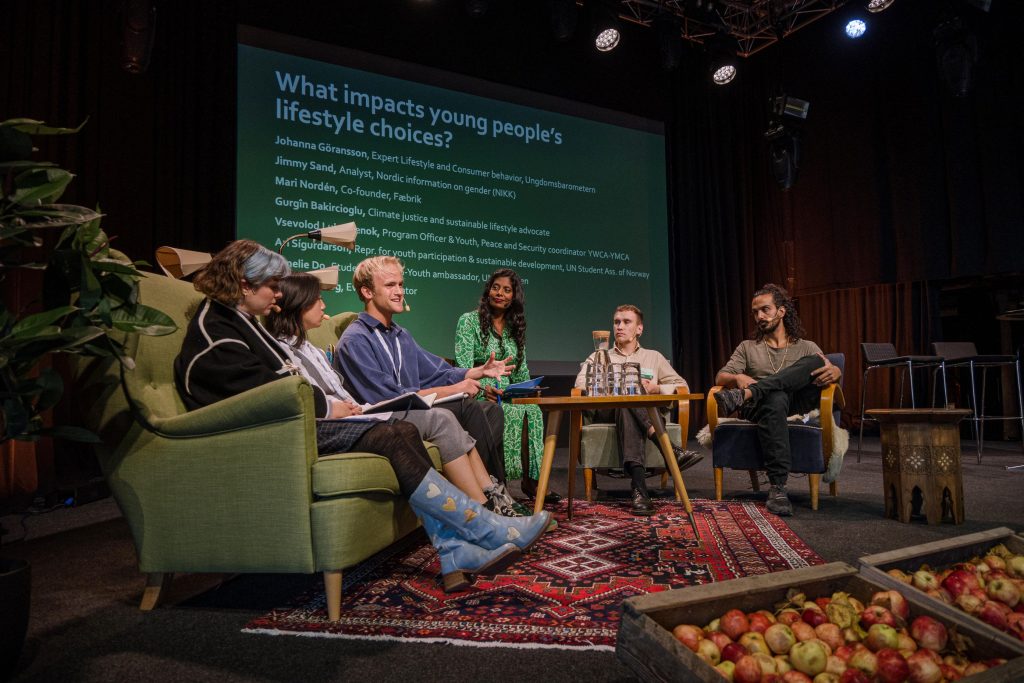
Expanding the school curriculum
One of the summit’s most consistent topics was the importance of vision and creativity in managing transformational change. The session on sustainable education highlighted the role schools play in shaping a vision of a sustainable future. Föreningen Norden has developed materials to help pre-school and high-school students express their ideas for a sustainable world.
Students shared their views on ways to learn and become change agents and asked for more sustainability in the educational curriculum. Christer Holmlund of the Nordic Teachers’ Council stressed that while much hope is placed on youth, the responsibility must be shared by everyone: “We cannot put the responsibility solely on the young. We all need to engage.”
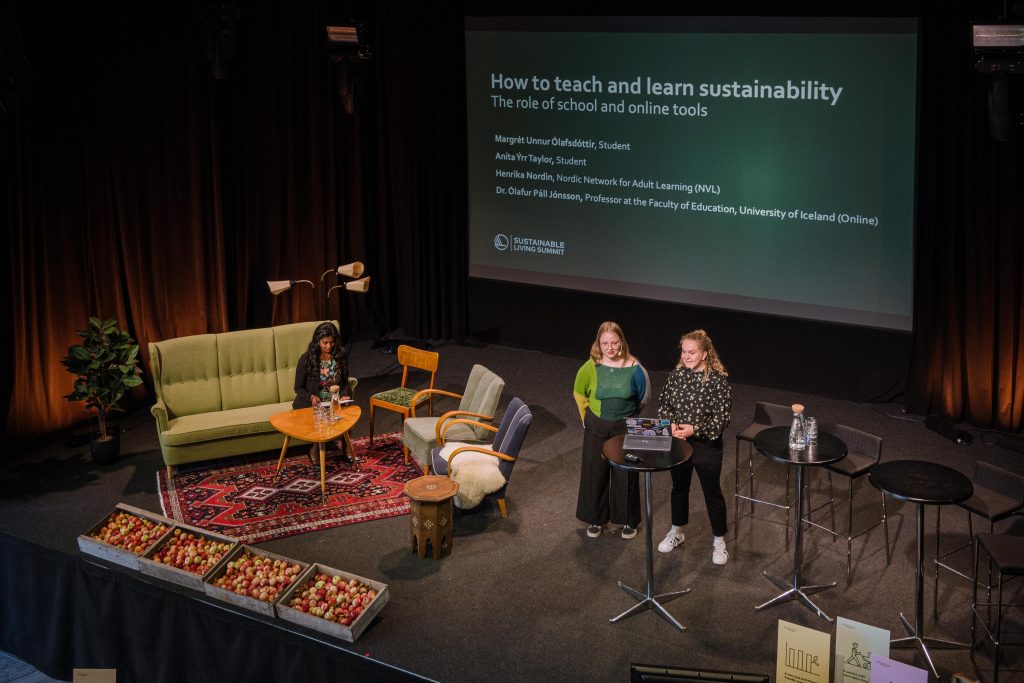
How would you envision a good life in 2050?
From citizens to politicians, we all need to start thinking about what “a good life” is in a climate-neutral world. Participants got to practice this, during a lunch mediation, where we imagined what a good life would look like in 2050. Research presented during the summit underscored the importance of having an inspiring vision to guide transformational shifts, referencing the report The Nordic Vision for Climate Neutrality.
Can cultural experiences inspire us to live sustainably?
For those who had trouble imaging this good life, Louise Lindén, a key advocate for the cultural sector’s role in sustainability, presented a reason for that: we live in both a climate crisis and a “fantasy crisis.” She stressed the creative sector’s role in helping people envision a future where sustainability is an interesting part of people’s lifestyles and cultures, with the vegetarian music festival Way Out West and Sweden Rock’s initiative “Hållbar Hårdrock” as good practices.
Linnéa E. Vågen Svensson presented the Nordic Green Roadmap for Cultural Institutions that offers tools and guidelines to help the cultural sector transition to greener practices: “This shift is perceived as expensive and resource-demanding. So we wanted to show that it is doable”. Solveig Korum from Kulturtanken seconded this and highlighted her view on culture as the “glue” between the economic, environmental, and social aspects of sustainability. She asked policymakers to include the culture sector when planning for 2030.
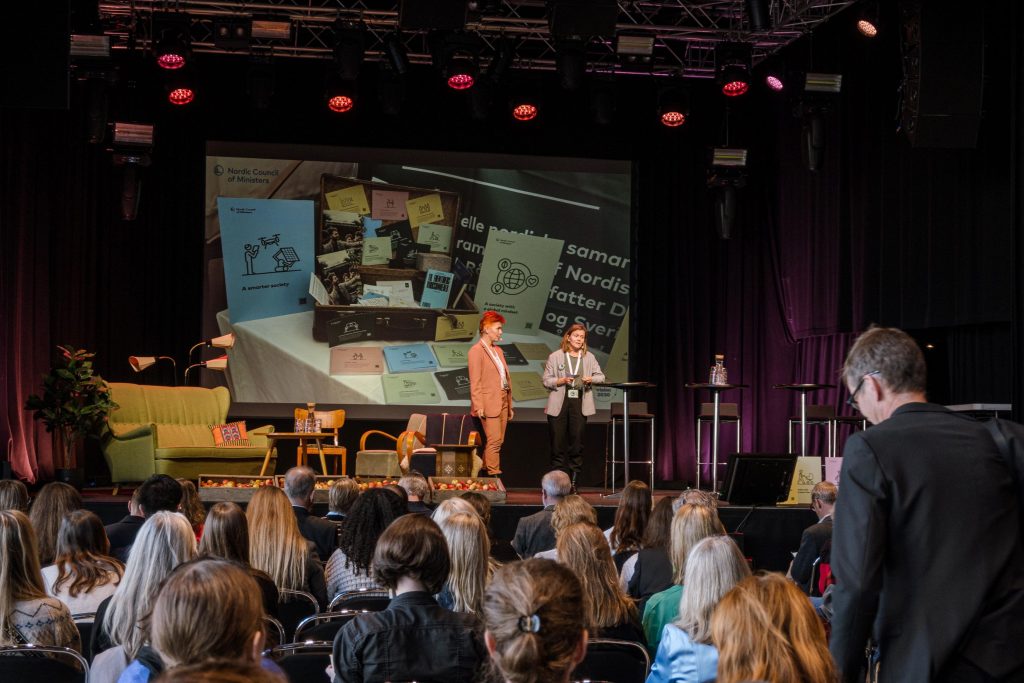
What needs to change?
In a discussion about degrowth and sustainable visions, Peter Fellman, editor-in-chief of Dagens Industri, commented, “It’s easy to say that reducing consumption and growth will solve everything, but it’s not that simple. People like comfort, and we need to find ways to connect that to sustainability.” He referenced companies like Northvolt and Stegra in northern Sweden, which are at a critical juncture in sustainable innovation.
The panel concluded with a discussion on fashion, calling for increased taxes on fast fashion, reduced individual consumption, and greater societal focus on the practices of repairing and reusing. This perfectly set the stage for the final event of the day: a redesign fashion show by Waxiu Shehu, from Studio234+.
Sustainable Living Summit conclusions
A recurring theme throughout the summit was the synergy between sectors—sustainable food practices, conscious fashion, and environmental education all form part of an interconnected system. As the event wrapped up with a combination of comedy, a talk show, and a fashion show, the importance of engaging the heart and not just the head, in driving sustainable choices was put to practice.
The Sustainable Living Summit showcased both the stakes and the solutions at hand. The choices we make today will shape our collective future, and the event highlighted practical steps we can all take toward a more sustainable world.
Head to the Sustainable Living Hub to make the move towards enabling sustainable lifestyles in the Nordics.
All photos by: Kotryna Juskaite / Nordregio
